
Jupiterimages/Stockbyte/Getty Images
Cellophane and rice noodles are both used in Asian salads, soups and stir-fries. They can often be used interchangeably in recipes, but they are not the same thing and aren't made from the same ingredients. Both are thin and light and cook quickly, and offer a change of pace from traditional rice or pasta.
Appearance
Cellophane noodles, also called glass noodles or bean threads, are translucent. They may be long and thin like angel hair pasta or flat like fettuccine. They are sold bundled or coiled in one large cluster. When cooked, these noodles look like ribbons of glass. Rice noodles, on the other hand, are opaque and look more like traditional Italian pasta. These noodles are sold packaged similar to spaghetti, with the noodles lying flat. They may labeled as rice sticks. When cooked, rice noodles resemble traditional pasta.
What They're Made From
Cellophane noodles are made from mung bean flour and water, earning them the common name of bean threads. Rice noodles are made from rice flour and water. Both are typically sold dehydrated and are readily available in larger supermarkets. Some grocery stores sell fresh cellophane or rice noodles, usually in the fresh produce aisle, as they are commonly used for stir-fries or in recipes with fresh vegetables.
Preparation and Cooking
Cellophane noodles require soaking in water to rehydrate them before cooking. While some thin cellophane noodles need little more than to be run under hot tap water, others require 15 minutes of soaking before they are ready to cook. Rice noodles require soaking before cooking if you plan to stir-fry them. Both cook in two to three minutes in boiling water. Cellophane noodles are nearly flavorless, but absorb and hold the flavors of whatever they're cooked with. Rice noodles serve the same purpose, but have slightly more flavor of their own.
Nutritional Value
Both cellophane and rice noodles are low in sodium and fat and high in carbohydrates, as most noodles are. Dry cellophane noodles contain 24 grams of carbohydrates in 1 ounce, while dry rice noodles have 23 grams of carbohydrates in 1 ounce.
Related Articles
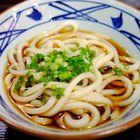
Calories in Udon Noodles

How to Cook Luglug Cornstarch Noodles

Difference Between Soba and Udon Noodles

Directions on How to Cook Soba Noodles

How to Soak Adzuki Beans

What Is Indian Flatbread Called?

How Long Do I Cook Vermicelli?
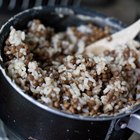
Rice & Lentil Diet

Does Rice Taste Different Depending on ...

How to Freeze Lentils

Calories in Gluten Free Pasta
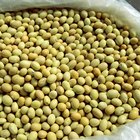
How Do I Prepare and Cook Lupine Beans?

How to Cook Vietnamese Rice Stick ...

Calories in Udon Noodles
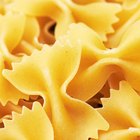
Calories in Bowtie Pasta

What Noodles Can You Use for a Pancit ...
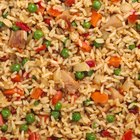
How to Cook Arroz Chaufa

Can You Eat Frozen Edamame From the ...

Lumpia vs. Egg Rolls

How to Make Tuna and Noodle Casserole
References
- My Recipes: Are Rice Noodles the Same as Cellophane Noodles?
- Palm Beach Post: Differences in Rice, Cellophane Noodles
- My Recipes: Cooked Rice Noodles (Bun)
- My Recipes: Chicken and Glass Noodle Salad
- NutrionData: Noodles, Chinese, Cellophane or Long Rice (Mung Beans), Dehydrated
- NuritionData: Rice Noodles (Dry)
Writer Bio
Nannette Richford is an avid gardener, teacher and nature enthusiast with more than four years' experience in online writing. Richford holds a Bachelor of Science in secondary education from the University of Maine Orono and certifications in teaching 7-12 English, K-8 General Elementary and Birth to age 5.
Photo Credits
Jupiterimages/Stockbyte/Getty Images